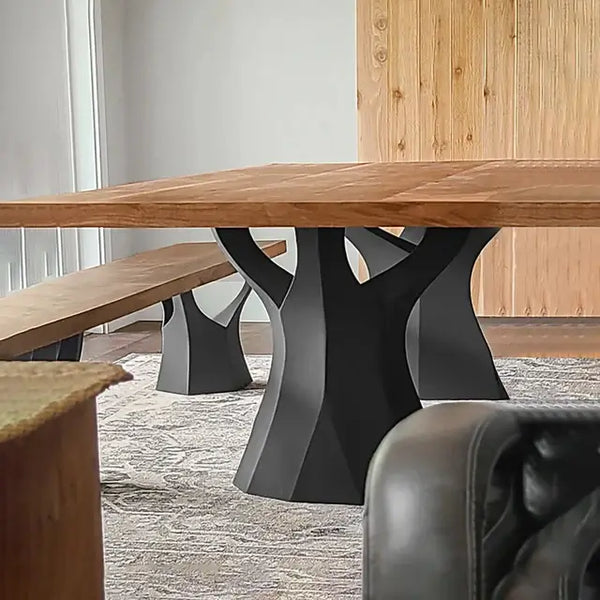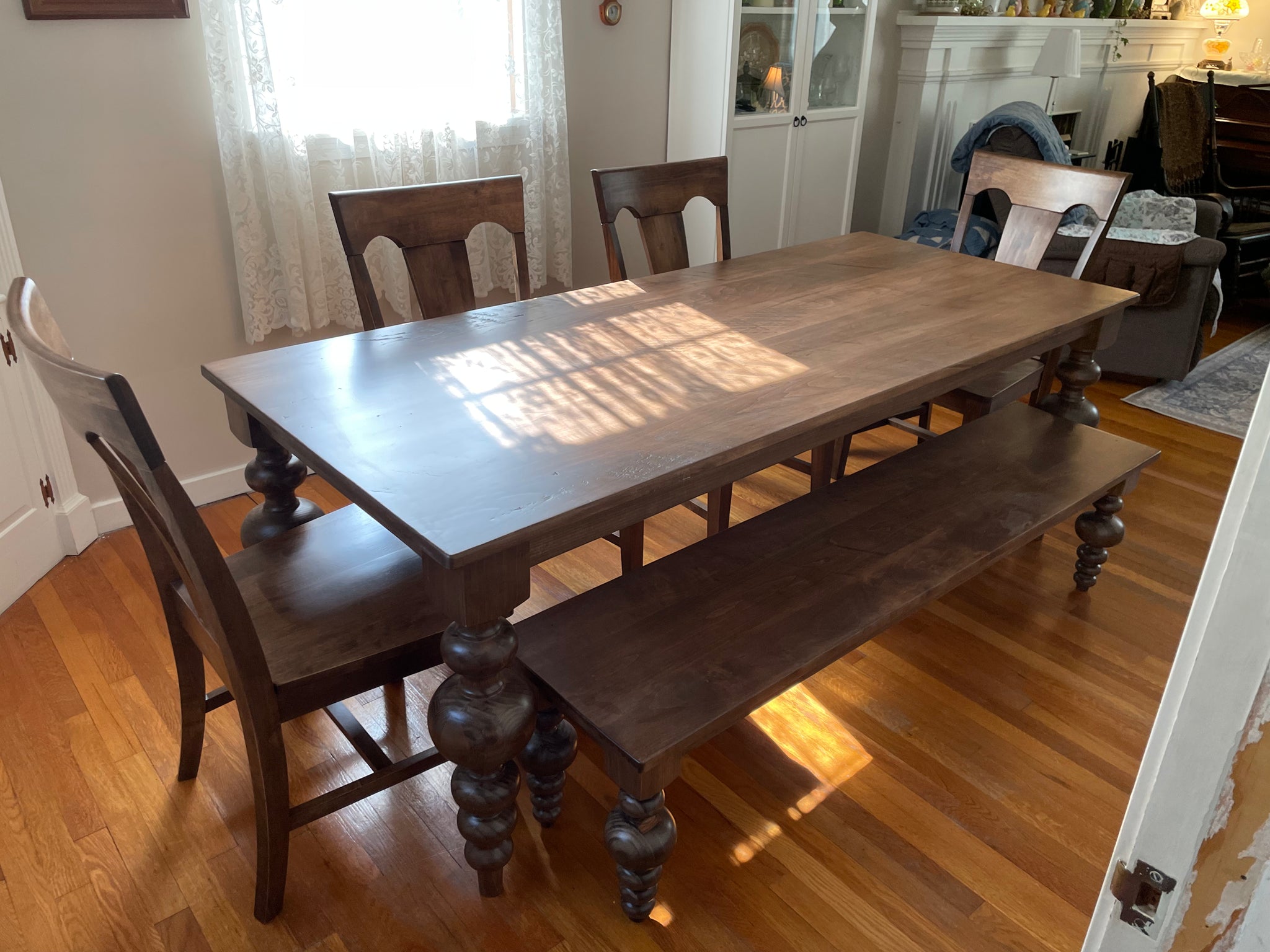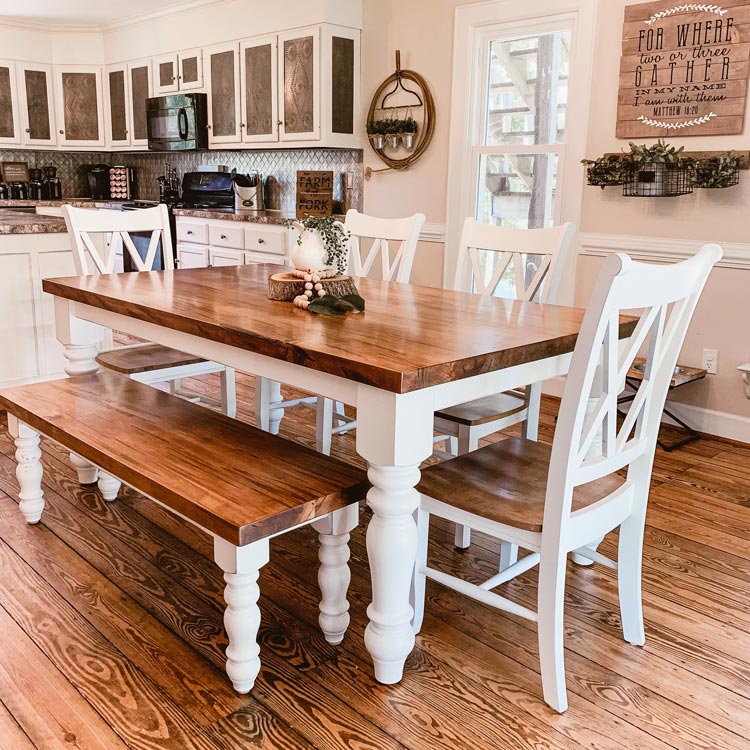Why Dining Room Table Legs Are Crucial for Your Table’s Stability
Wiki Article
How to Choose the Perfect Dining Area Table Legs for Your Home Décor
Picking the excellent eating space table legs is a nuanced process that requires careful factor to consider of numerous aspects, including your area constraints, visual preferences, and useful needs. The interaction in between materials, dimensions, and designs can considerably affect the setting of your dining area, making it crucial to approach this choice systematically.Assess Your Eating Space
Assessing your eating area is essential for choosing the right table legs that match both looks and performance. Begin by measuring the measurements of your dining location, including ceiling elevation, floor room, and distance to various other furniture. This information will certainly help figure out the suitable dimension and height of your eating table, which directly affects the choice of table legs.Following, consider the style and format of your dining area. An open-concept style might profit from table legs that offer visual agility, such as slim steel or acrylic options. On the other hand, an extra traditional setting may ask for sturdy wooden legs that supply a feeling of durability.
Assess the existing color palette and materials in your eating location. Integrating the table legs with these components develops a natural look that enhances the general design.
Ultimately, a detailed assessment of your dining area will direct you in making an informed decision, making sure that your table legs not only boost the aesthetic charm but also offer sensible functions.
Consider Your Style Preferences
When choosing dining-room table legs, it is necessary to assess your personal style choices, as they substantially influence the overall visual of your dining space. Your selection of table legs can either complement or contrast with existing decor, making it vital to align them with your preferred indoor style motif.If your home leans in the direction of a modern visual, think about sleek steel or minimalist wood legs that offer a tidy, clean look. For a much more conventional strategy, ornate wood legs with detailed makings can include a touch of sophistication and class. Industrial designs gain from durable, raw materials such as recovered timber and metal combinations, reflecting a rugged beauty.
In addition, farmhouse and rustic styles usually favor sturdy, beefy legs that stimulate a feeling of warmth and convenience. On the other hand, if your decoration is diverse, you could pick unconventional shapes or a mix of materials to develop visual passion.

Evaluate Material Options
The selection of material for dining space table legs plays a crucial role in both sturdiness and visual charm. Usual products consist of timber, steel, and composite options, each offering distinct qualities that can influence the general appearance and durability of your table.Timber is a traditional selection, recognized for its heat and convenience. Woods like oak and walnut give exceptional strength and can be finished in various stains to match any decor. Softwoods like yearn are much more prone to dents and scrapes, making them less perfect for high-traffic areas.
Steel legs, usually crafted from steel or light weight aluminum, emanate modernity and commercial charm. They are highly durable and immune to put on, making them appropriate for households with children or constant celebrations (dining room table legs). Furthermore, metal can be ended up in different colors, boosting the personalization possibilities
Composite products, such as MDF or laminate, deal affordability and varied layouts. While generally much less resilient than solid timber or metal, they can still give an elegant appearance and are usually very easy to maintain.
Inevitably, the material you pick should align with your lifestyle, visual preferences, and the degree of use your eating table will certainly experience.
Determine Height and Dimension
Selecting the ideal height and dimension for your dining area table is vital for both functionality and convenience. The basic elevation for dining tables normally ranges from 28 to 30 inches, enabling ample legroom for a lot of people when seated. Nevertheless, it is essential to consider the measurements of your eating area and websites the sorts of chairs you plan to utilize.
Furthermore, think about the proportions of your dining-room. A larger table in a large location can produce a grand setting, while a smaller sized table functions well in even more intimate setups. Eventually, the ideal elevation and dimension will balance with your general decoration and improve the dining experience for you and your guests.
Explore Customization Possibilities

In addition, the style of the legs can be customized to fit numerous designs, such as rustic, modern, or commercial. Tapered legs can stimulate a mid-century modern feeling, while beefy, block-style legs may reverberate with conventional or farmhouse decor.
Home owners can likewise explore shade finishes, from all-natural wood spots to paint, enabling them to match or comparison with the tabletop and bordering decoration.
Furthermore, leg elevation can be gotten used to suit particular seating setups or personal choices, boosting both comfort and capability.
Lastly, special embellishments, such as carvings or attractive brackets, can additionally individualize the table legs, making the dining experience not simply a declaration but a meal item in the home. By considering these personalization alternatives, homeowners can produce an eating room table that really mirrors their originality.
Conclusion
Choosing the excellent dining-room table legs needs mindful factor to consider of various elements, consisting of the measurements of the eating space, style preferences, material toughness, and wanted elevation. Customization options even more improve the capacity to attain a natural visual that enhances the overall decor. By systematically assessing these aspects, house owners can make sure find here that the picked table legs not just meet useful needs yet additionally add favorably to the dining experience and atmosphere of the home.Choosing the optimal dining room table legs is a nuanced process that requires careful consideration of numerous components, including your room restraints, visual preferences, and useful needs.Assessing your dining room is critical for picking the right table legs that match both looks and performance.When figuring out size, measure the location where the table will certainly be positioned to guarantee it fits conveniently, allowing for at the very least 36 inches of clearance around the table for simple motion. A larger table in a sizable location can create a look at these guys grand setting, while a smaller sized table functions well in more intimate setups.Choosing the optimal dining area table legs needs careful factor to consider of different factors, consisting of the dimensions of the eating area, design choices, material longevity, and desired height.
Report this wiki page